Plants
I have a carefully curated selection of potted plants that thrive in Fairfax, VA. Find me at the Burke Farmer's Market on Saturdays, 8-12, or message me to order!
🦋 Tropical Milkweed -Host to Monarch Butterfly
Botanical Name: Asclepias curassavica
Common Names: Tropical Milkweed, Bloodflower, Scarlet Milkweed
Type: Tender Perennial / Grown as Annual in Cooler Zones
USDA Zones: 9–11 (annual elsewhere)
☀️ Light
-
Full sun (6+ hours daily) for best growth and flowering
-
Tolerates part sun, but blooms may be reduced
💧 Water
-
Water regularly; keep soil moderately moist but well-drained
-
Drought-tolerant once established
🌱 Soil
-
Prefers well-draining, sandy or loamy soil
-
Tolerates poor soil but benefits from compost-rich conditions
-
pH: 6.0–7.5
🌿 Growth & Size
-
Height: 3–4 ft
-
Spread: 2–3 ft
-
Upright, bushy habit
✂️ Pruning
-
Cut back in fall

OUT OF STOCK
🍌 Dwarf Cavendish Banana Tree
Botanical Name: Musa acuminata 'Dwarf Cavendish'
Common Name: Dwarf Banana, Dwarf Cavendish Banana
Type: Tropical Herbaceous Perennial
USDA Zones: 9–11 outdoors; grow as container plant indoors or in cooler zones
☀️ Light
-
Prefers full sun (6–8+ hours/day)
-
Indoors: place near a south- or west-facing window
-
Can tolerate partial shade, but less fruiting
💧 Water
-
Water regularly and deeply — keep soil evenly moist, not soggy
-
Allow top inch of soil to dry between waterings
-
Loves high humidity
🌿 Growth & Size
-
Height: 4–6 ft (container-grown); can reach 6–8 ft in ideal conditions
-
Fast-growing with large tropical leaves
-
May need staking or support in windy conditions
🍌 Fruit
-
Produces small, sweet bananas after 2–3 years
-
Requires warm, sunny conditions to fruit
-
Fruit forms after flowering and ripens in several months
🌾 Fertilizing
-
Feed monthly during growing season (spring–fall) with a balanced fertilizer (e.g. 10-10-10 or tropical plant food)
-
Extra potassium helps with fruiting
🌴 Fun Fact
The Dwarf Cavendish is the same banana variety found in most grocery stores — just smaller in stature and perfect for home growing!
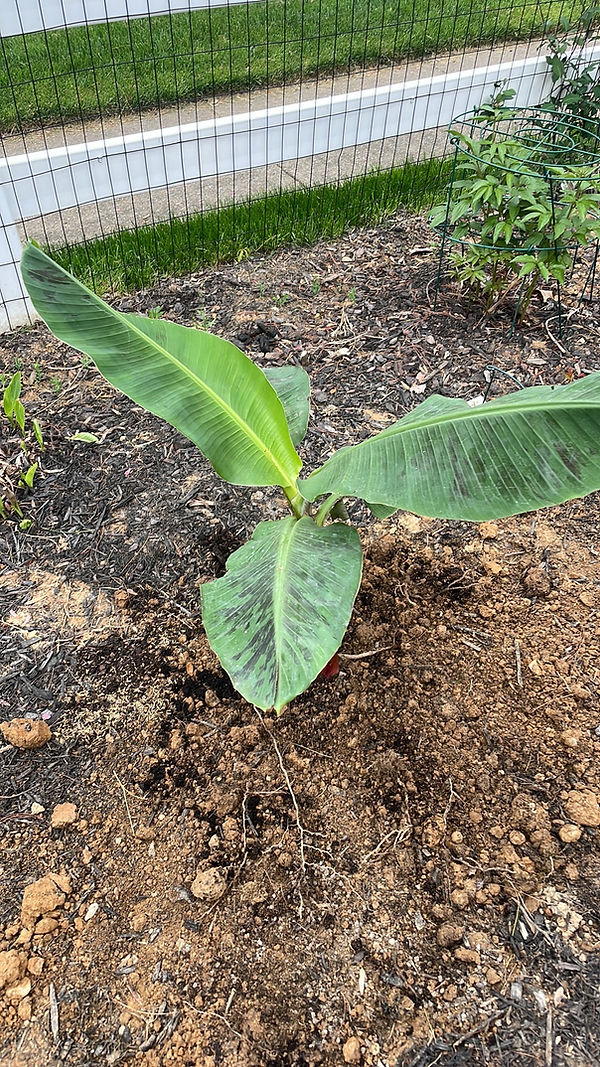_JPG.jpg)
🌸 Virginia Maypop
Host plant for Gulf Fritillary and Zebra Longwing butterflies!
Botanical Name: Passiflora incarnata
Common Names: Maypop, Purple Passionflower, Wild Passion Vine
Type: Perennial Vine
USDA Zones: 6–10 (can survive in Zone 5 with protection)
☀️ Light
-
Grows best in full sun
-
Can tolerate partial shade, but fewer blooms
💧 Water
-
Water regularly during the first growing season
-
Once established, it’s moderately drought-tolerant
🌸 Bloom Time
-
Mid-summer to early fall
-
Showy, exotic purple and white flowers attract bees, butterflies, and hummingbirds
-
Followed by egg-shaped edible fruit (Maypops)
🌿 Growth & Size
-
Fast-growing climbing vine, 10–25 feet
-
Spreads by underground rhizomes — can naturalize
-
Use a trellis, fence, or arbor for support
🍈 Fun Fact
The "maypop" name comes from the sound the ripe fruit makes when stepped on — it "pops"! The fruit is edible fresh or in jams and drinks.
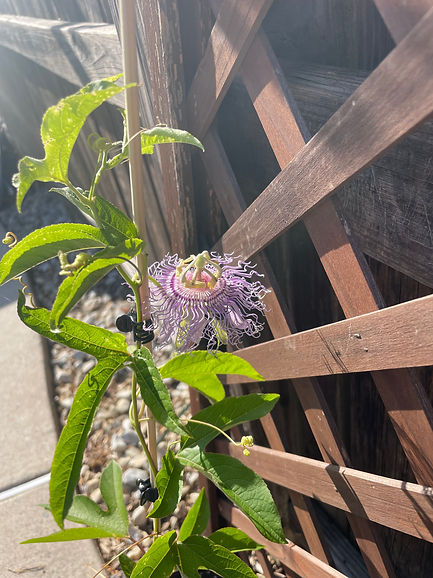
.jpg)
🌺 Hardy Hibiscus
Botanical Name: Hibiscus moscheutos
Common Names: Rose Mallow, Swamp Rose Mallow
Type: Herbaceous Perennial
USDA Zones: 4–9
☀️ Light
-
Prefers full sun (6–8+ hours daily)
-
Tolerates light shade but blooms best with ample sunlight
💧 Water
-
Keep soil consistently moist, especially during hot spells
-
Tolerates wet soil — ideal for rain gardens or near water features
🌼 Bloom Time
-
Mid to late summer through early fall
-
Giant, showy blooms (6–12 inches wide), typically in shades of red, pink, or white
🌸 Fun Fact
Hardy hibiscus dies back completely in winter but returns with vigorous growth in spring — don’t worry if it’s slow to sprout!
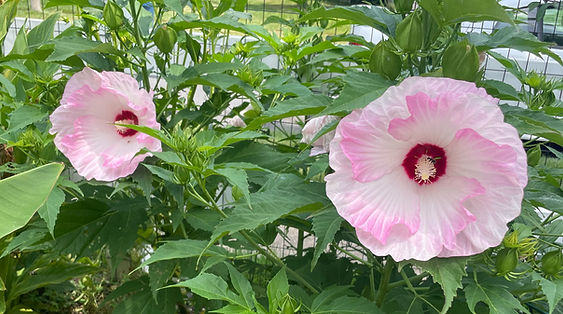_edited.jpg)
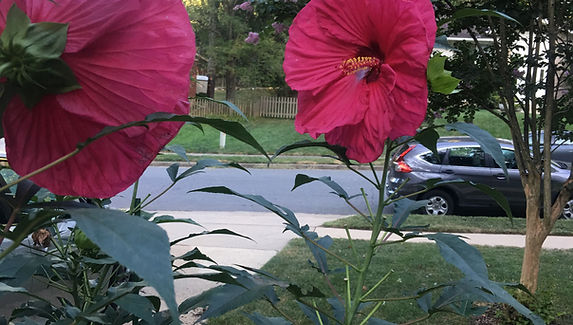
🌿 Joe Pye Weed
Botanical Name: Eutrochium purpureum (and related species)
Common Names: Joe Pye Weed, Sweet Joe Pye, Purple Thoroughwort
Type: Perennial Wildflower
USDA Zones: 4–9
☀️ Light
-
Thrives in full sun to part shade
-
More sun = taller plants and more blooms
💧 Water
-
Prefers moist to wet soil
-
Tolerates clay and occasional standing water
-
Great for rain gardens or pond edges
🌸 Bloom Time
-
Mid to late summer through early fall
-
Tall clusters of mauve-pink flowers attract butterflies, bees, and hummingbirds
🦋 Fun Fact
Joe Pye Weed is a pollinator powerhouse — a top choice for monarchs and native bees!
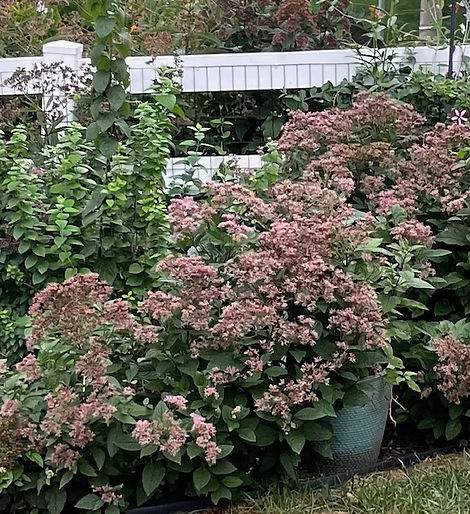

Photo by Johnny's Selected Seeds
OUT OF STOCK
🌻 Branching Strawberry Sunflower
Botanical Name: Helianthus annuus
Common Name: Branching Strawberry Sunflower
Type: Annual
USDA Zones: Grown as annual in all zones (ideal in Zones 4–9)
☀️ Light
-
Requires full sun (6–8+ hours daily)
-
More sun = stronger stems and more flowers
💧 Water
-
Water deeply but infrequently
-
Let soil dry slightly between waterings
-
Avoid overhead watering to reduce risk of mildew
🌸 Bloom Time
-
Summer to early fall
-
Blooms in shades of pink, burgundy, and gold
-
Branching habit = multiple blooms per plant
🌿 Growth & Size
-
Height: 4–6 ft
-
Spread: 2–3 ft
-
May need staking in windy areas
🐝 Fun Fact
These sunflowers are pollinator magnets, loved by bees and butterflies — and they make stunning cut flowers!






